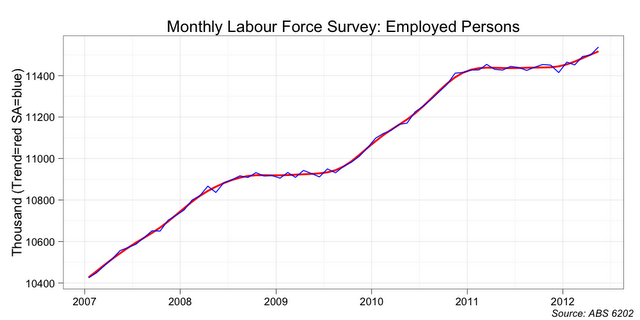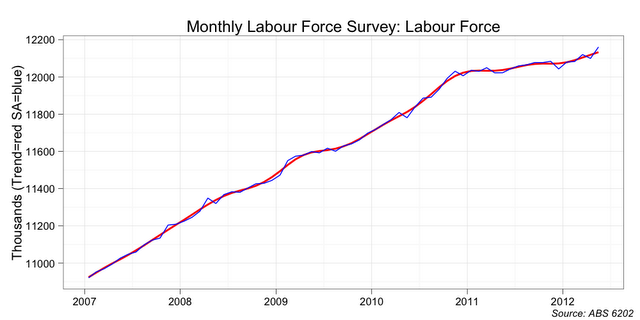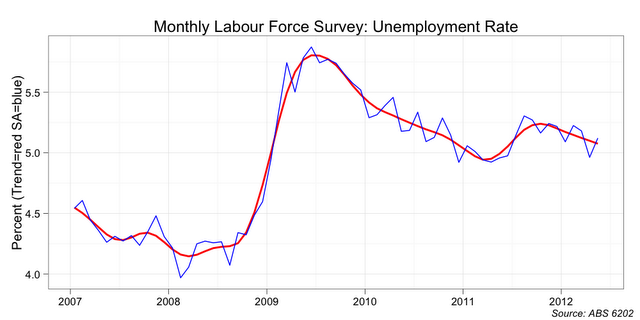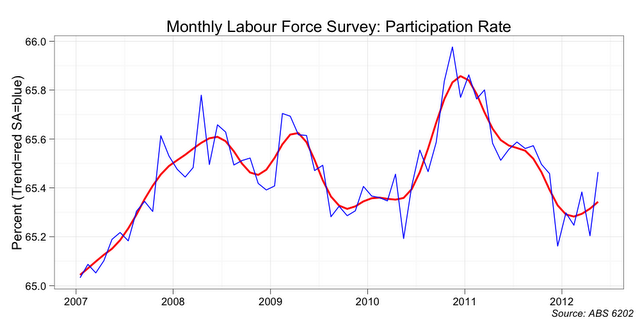Courtesy of Mark the Graph.
We have had two slow downs in employment growth since the GFC. The first spanned the 12 months of financial year 2008-09. The second spanned the 12 months of calandar year 2011. These are the plateaus in the next chart.
Interestingly, we have had only one slow down in the growth of the labour force for the same period: essentially during calandar year 2011.
As a result, we have only seen one significant jump in the unemployment rate during the post GFC period: during financial year 2008-09. [The unemployment rate is the number of unemployed people people divided by the number of people in the labour force times 100 per cent].
If the labour force had continued to grow at its usual pace, the small bump in the unemployment rate in calandar year 2011 would have been of a similar size to the jump in 2008-09. It would have jumped some 1.7 percentage points off a base rate of 5 per cent. That is to say, the unemployment rate today would be something like 6.5 per cent (trend); and not 5.2 per cent as currently reported.
In growth through-the-year (TTY) terms (so lagged from the above charts by around 6 months), we can see the constant growth in the labour force during 2009 (blue line), while employment growth slows (red line), resulting in a huge increase in those unemployed (green line). In the 2011-12 period both the red and blue lines collapse together, and as a consequence the green line did not rise significantly.
So where are these unemployed people? Many would have dropped out of the labour force. Some would be at home. Some would be at school. Some would be dependent on partners or parents while others would be on income support. These are the people that represent the decline in the participation rate during 2011 (see next chart).
But no question, if these people had not dropped out of the labour force, today’s unemployment rate would be around 6.5 per cent.






